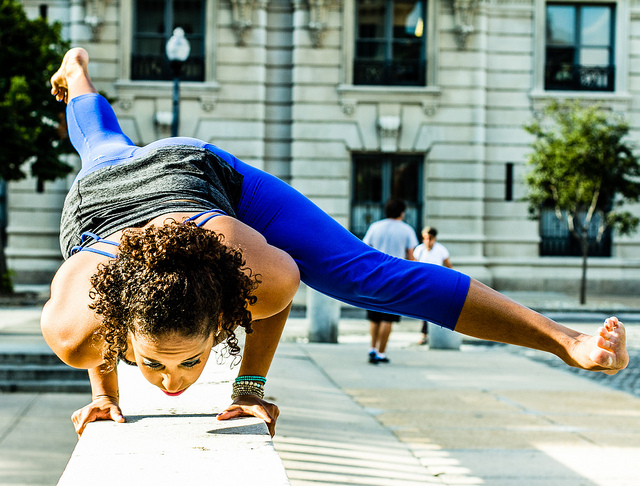Love it or hate it, our lives are always in transition.
Sometimes we don’t realize it if we have lived in the same place for a long time, have worked the same job, been married forever, et cetera. We tend to only notice the transient nature of life when big changes happen: divorce, change of job, change of location, change in health status, or death.
In the last year, I have experienced major changes in my life, both personal and career-focused. These changes and experiences rest on a continuum from amazing to heartbreaking. This summer alone I have driven across the country, taken long visits to other places, and in two weeks I am moving to India for 10 months.
I am currently employed in one state, reside in another, but have “residency” in a third—and this doesn’t even reflect half of what has happened, is happening, or will happen.
I think it’s safe to say that my life reflects big transition. And I love it.
I was practicing both Ashtanga and hot power/vinyasa yoga diligently until I started my big move. I practiced despite a persistent ache in my knee and not ever feeling hydrated enough. My practice was forced to change due to these health reasons, as well as no longer having the consistent schedule or studio space to maintain these styles.
At a certain point I realized that my yoga practice could still be stable and consistent even if it lacks classic structure. Here are some specific lessons I learned that helped me redefine my yoga practice while my life continues to be in a state of flux:
1. Continually check in with your intention.
Why are you practicing yoga? If you have a strict daily practice, why are you doing it? Really question yourself. At first I practiced Ashtanga everyday because it made me feel awesome and I was learning new things. Then it became too draining. My intention shifted from, “Yay, this helps me grow in my practice” to “I am practicing because I have to.” That’s when my body started breaking down and my stress levels increased. I paid more attention to my ego than what my body needed.
2. Be open to trying new classes, teachers, and styles.
In the past two months, I have had the privilege of practicing at several new studios in three different states, with a minimum of eight teachers, and at least five styles.
At first I felt myself being a little judgmental because the classes weren’t pushing me to learn more difficult asanas (poses), like in Ashtanga, and the instructors used too much of a passive voice, or the studios charged way too much for classes that didn’t offer much for more advanced students like myself.
One day I was complaining about this, and was mostly annoyed with myself for being such a yoga snob who expects to constantly be learning something every place I go. An insightful friend told me that maybe I don’t need to be learning new asanas right now, but instead just need to practice. She was totally right.
3. Invest in a mat you love and bring it with you everywhere you travel.
For a while I traveled with a travel mat or with a yogi towel to use on others’ mats because my mat was too bulky to take with me. Recently, I invested in a good mat, and love it so much that I bring it everywhere.
Having your mat in a new location can give you a sense of being home and it guarantees that your practice will have some level of comfort (we should be past the yoga era of sliding on our mats…just sayin’). I know this might sound silly, but try it out for yourself and you’ll know.
4. Let go of what you “think” you should be doing in your yoga practice.
This is a biggie. I am all about structure, daily practice, and consistency. However, sometimes our lives don’t support that in a yoga practice.
Taking a break from Ashtanga and hot power yoga has helped me step back and readjust my daily yoga goals. I no longer think, “I need to master XY asana by November” or “I need to maintain daily sun salutations so I don’t lose physical balance which leads to other imbalances” or “I must practice everyday at the exact same time and place.”
Why did I have those expectations? Well, they worked for me at the time and there is nothing wrong with thinking about yoga in that way. However, there are many ways to practice yoga and it can be counterproductive to stay stuck in one perspective.
Now I just practice. I might do Yin, I might do bits of Ashtanga, I might just do sun salutations. I might do a shoulderstand then savasana for 20 minutes. I might meditate. I might not do yoga at all. Guess what? I feel more grounded and less stressed about yoga.
Which leads me to the next point….
5. Take at least two weeks and do something completely different from your regular practice.
Stop practicing in the morning. Practice at home if you’ve been in the studio. Meditate instead. Stop practicing headstands. Practice headstands. Take pictures of yourself in your poses. Stop taking daily pictures of yourself.
Be creative! The point is is that we get stuck in yoga routines that could either 1) Make us more enlightened or 2) Make us more egotistical. Check in with yourself and see which category you are in. Then let it go.
6. Look at Groupon for deals on packages.
This is more practical advice. But, even if there is a deal on a style you normally would never try, do it anyway.
7. Put your yoga clothes on when you wake up and wear them until you practice.
Everyone wears yoga pants now, even if they do not practice yoga, so it’s no big deal to run errands in your yoga gear. I have found that if I wear yoga clothes during the day, that I am more likely to spontaneously practice when I need it rather than make excuses as to why I can’t in that moment (unless you have a job that prevents you from dressing in yoga pants).
8. Rediscover those old yoga tunes you haven’t listened to in years.
When I practice at home and want music, I put on the really old songs that I haven’t heard in forever. I also listen to the music when I’m doing other things to help maintain a yogi mindset in daily life (which is the whole point, right?).
This list is not earth shattering and probably includes stuff you already know. However, this is what is working for me now as a person who is always working and moving and trying.
In the past few months, my daily disciplined practice was no longer working. I might return to it when I’m “settled,” and I might not. Now I can relax into my practice and let it be a place of tranquility and refuge, not something to maintain for external reasons or expectations.
If you are into traditional yoga, then at some point you might embrace the fact that yoga is a process, and there is no ultimate goal aside from union with your higher self. We can easily distract ourselves from this point along the journey, but it becomes clearer when you can experience union despite the changes that surround you.
Author: Caity Placek
Image: Dave Rosenblum on Flickr
Apprentice Editor: Pauline Holden; Editor: Emily Bartran












Read 0 comments and reply